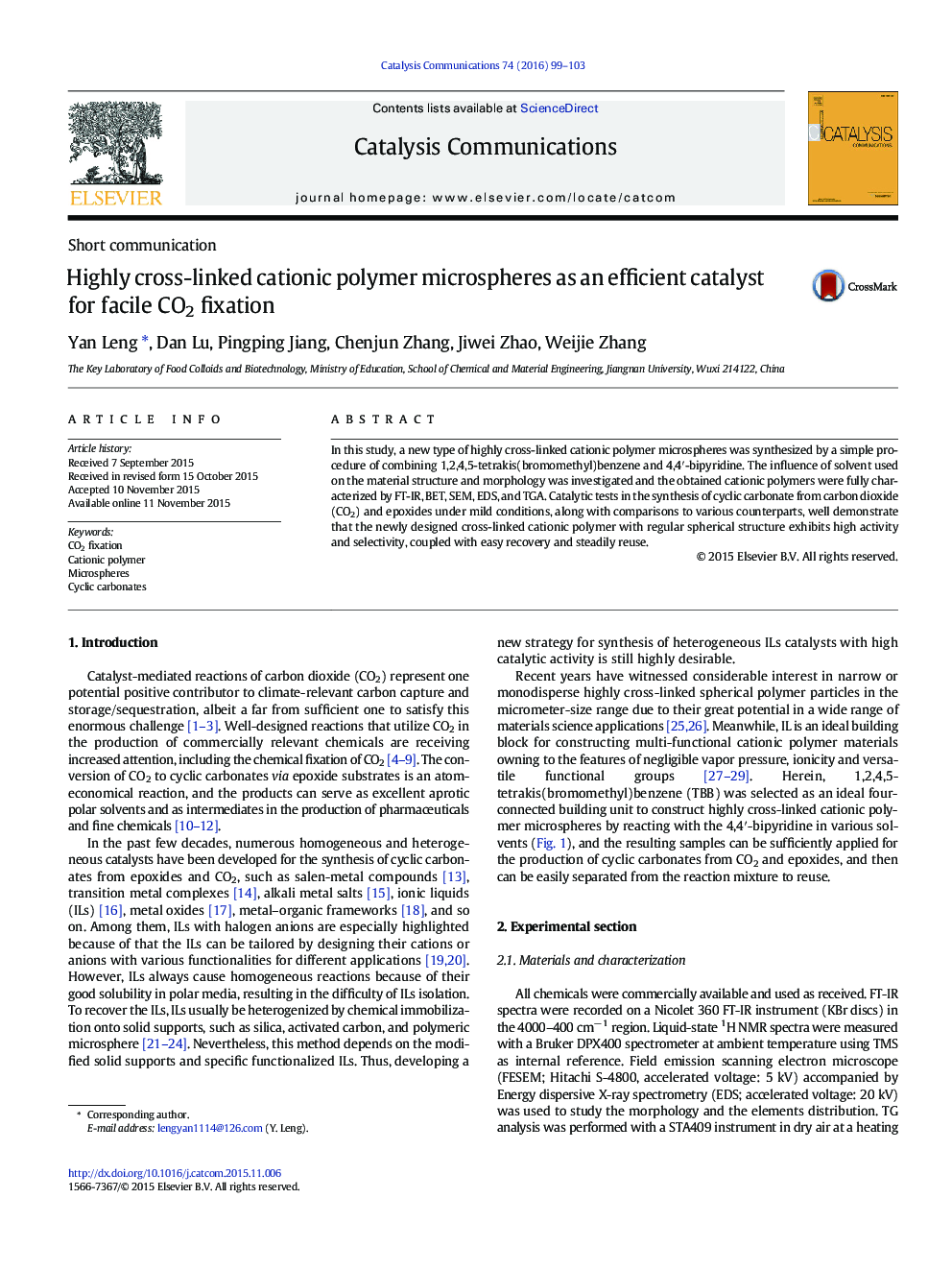| Article ID | Journal | Published Year | Pages | File Type |
|---|---|---|---|---|
| 49265 | Catalysis Communications | 2016 | 5 Pages |
•Highly cross-linked cationic polymer microspheres were synthesized.•The catalyst leads to the heterogeneous transformation of CO2 and epoxides into cyclic carbonates.•The catalyst gives high conversion and selectivity.•The catalyst can be easily recovered and steadily reused.
In this study, a new type of highly cross-linked cationic polymer microspheres was synthesized by a simple procedure of combining 1,2,4,5-tetrakis(bromomethyl)benzene and 4,4′-bipyridine. The influence of solvent used on the material structure and morphology was investigated and the obtained cationic polymers were fully characterized by FT-IR, BET, SEM, EDS, and TGA. Catalytic tests in the synthesis of cyclic carbonate from carbon dioxide (CO2) and epoxides under mild conditions, along with comparisons to various counterparts, well demonstrate that the newly designed cross-linked cationic polymer with regular spherical structure exhibits high activity and selectivity, coupled with easy recovery and steadily reuse.
Graphical abstractFigure optionsDownload full-size imageDownload as PowerPoint slide
